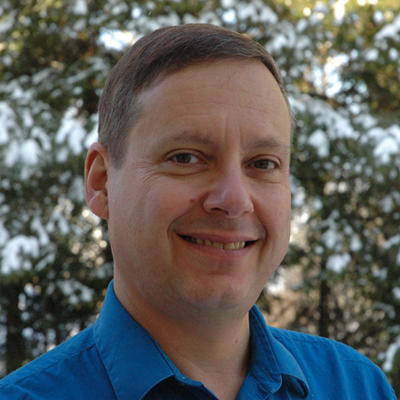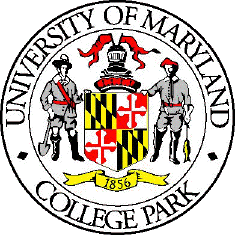Advancing technology from basic research to industry
Moore’s Law, first proposed by Gordon Moore, the co-founder of Intel, states that every 18 months, the number of transistors per square inch on integrated circuits will double. In other words, the number of simultaneous operations that can be performed on a computer chip doubles due to the rapid advancement of technology. Historically, Moore’s Law has proven to be a consistent trend; however, for the first time in history, the speed of advancement has slowed. Dr. John Fourkas, Millard Alexander Professor of Chemistry at the University of Maryland, College Park, is working to change the way in which computer chips are written, a field called lithography, so that Moore’s Law can continue to hold true. In order to continue to make ever smaller features on integrated circuits, novel approaches must be developed to solve difficult problems. Dr. Fourkas and his group have paved a path towards a completely new way of approaching such problems using visible light to achieve incredible resolution. His research, currently at a tipping point between fundamental work and industrial applications, will help to produce devices that are much less expensive and far more powerful in the near future.
Using lasers to study and sculpt matter at the nanoscale, Dr. Fourkas is developing entirely new methods for semiconductor lithography in which visible light can be used to create structures 100,000 times smaller than the width of a human hair. In order to achieve this goal, he and his group are exploring new technologies that involve the use of multiple colors of light. As pioneers in the development of multicolor lithography and having already demonstrated the basic premise of multicolor, visible light lithography, the next major challenge is developing chemistry and techniques that will allow this innovative method to be scaled up to being able to pattern entire semiconductor wafers. In a fight against time, with the hopes of proving to industry the necessity of their continued funding, Dr. Fourkas and his team are working to rapidly advance their studies and thus to share their technologies on a larger scale. Therefore, current donations to research will help Dr. Fourkas’ team to meet the demands of industry in a timeframe that will lend to sustainable funding.
Current research includes:
-
Scaling Up: Dr. Fourkas and his group pioneered the development of multi-color lithography, a technique that involves hitting a material with different colors of light in order to make patterns that are considerably finer than could be accomplished with one color alone. Having already demonstrated the basic technology, he and his team are transforming their technology to be useful in industry. Therefore, by demonstrating how to translate fundamental research into work that will impact industry across the board, Dr. Fourkas’ work is likely to have an impact in the homes of individual consumers in the future.
-
Developing a New Generation of Materials: Dr. Fourkas is working to further develop multi-color lithography techniques by adding a third color of light as opposed to the currently used two colors of light. Therefore, this allows for features to be put more closely together with higher resolution, like never before, for the next generation of materials in technology.
-
Transforming Chemistry into Compatible Materials: Moving from basic research to applications within industry, Dr. Forkus and his team are transforming useful materials in compatible processes for industry. The more researched the transition from basic lab work to industry is, the more likely it is that industry will integrate Dr. Fourkas’ novel practices into their practices.
-
Improving Pattern Transfer: Dr. Fourkas is hoping to use his novel materials in such a way that it will improve the pattern transfer into the semiconductors. Therefore, what now involves harsh steps that distort the patterns and lower the performance and yield of integrated circuits, Dr. Fourkas’ work with three different colors of light will give him and other scientists access to more broadly useful materials, improving the quality, yield and computing power of integrated circuits.
Bio
John Fourkas was bitten by the science bug at an early age. While still in elementary school, he attended scientific lectures with his father, the medicine and science reporter for the Sacramento Bee. He got the opportunity to meet famous scientists such as anthropologist Richard Leakey and oceanographer/filmmaker Philippe Cousteau. He was infected by the enthusiasm and passion of these and other scientists, perhaps most importantly his remarkable high school chemistry teacher.
He attended the California Institute of Technology, where he started performing research in his freshman year. He graduated in four years with both a B.S. (honors) and an M.S. in Chemistry, as well as four research publications under his belt. He did his graduate work at Stanford University with Michael Fayer as a National Science Foundation Graduate Fellow, pursuing applications of ultrafast lasers in areas such as flame diagnostics. When not in the laboratory, he spent his time in a rock band, playing in doubles volleyball tournaments, and cheering for the San Francisco Giants (including being at Candlestick Park for the Loma Prieta earthquake).
After work as a National Science Foundation Postdoctoral Fellow at the University of Texas at Austin and at the Massachusetts Institute of Technology, he took a chemistry faculty position at Boston College. He rose through the ranks to full Professor in seven years, during which time he received many national honors, including a Beckman Young Investigator Award, a Research Corporation Cottrell Scholar Award, a Sloan Research Fellowship, and a Camille Dreyfus Teacher-Scholar Award. He moved to the University of Maryland, College Park in 2005 as the Millard Alexander Professor of Chemistry.
His research spans fields including physical chemistry, analytical chemistry, materials science, optics, nanoengineering, biophysics, and electrical engineering, and ranges from fundamental studies to applications-oriented work. The common thread running through his diverse research interests is the use of ultrafast lasers to study, image, and control matter on the nanoscale. He is a Fellow of the American Physical Society, the Optical Society of America, and the American Association for the Advancement of Science. He has been a Senior Editor of the Journal of Physical Chemistry for the last 13 years, and is on the Editorial Board of Laser & Photonics Reviews. He is also involved with the Division of Laser Science of the American Physical Society, for which he is currently serving as Chair. His research has been featured in venues such as Popular Science, Discover, the Washington Post, and Encyclopedia Britannica.
He is an enthusiastic teacher, and does his best to infect his students with the same passion for science that infected him at an early age. Dozens of undergraduates have performed research in his laboratory and have published their work in international journals. When he is away from campus, he is still a big baseball fan, rooting both for the Giants and the Washington Nationals. He still enjoys playing music, as well as cooking (especially spicy cuisines) and making and drinking wine.
In the News
Rebecca C. Jernigan, Photonics.com, April, 2009
Saswato Das, IEEE Spectrum, June 1, 2009
Linjie Li, Rafael Gattass, and John Fourkas, SPIE Newsroom, June 24, 2009
John T. Fourkas, SPIE Newsroom, January 28, 2015


